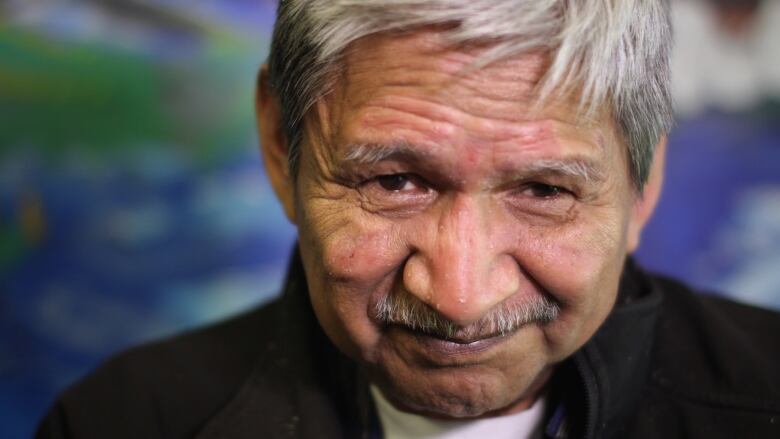Traditional First Nations culture may help reduce teen suicides
Pilot project underway in Fraser Valley's Seabird Island community

Suicide is something that has had an impact on nearly every member of the Seabird Island Band in British Columbia's Fraser Valley. When someone in the tight-knitcommunity takes their life, it hits close to home for everyone.
Summer Kelly, 15, lost her older brother to suicide in Feb. 2015. He was17 years old. Kelly said it was devastating, anda total surprise. She said things might have worked out differently had she and the family known what her brother was going through.
"Just to tell him that we love him, and yeah " Kelly said, her voice trailing off.
Since her brother's death, suicide is something that has crossed Kelly's mind, but she said itisn't something she thinks about seriously.
- Attawapiskat declares state of emergency over spate of suicide attempts
- For First Nations facing suicide crisis, the solution is rooted in the community
- 'Our job is to close the gap,' Minister of Indigenous Affairs tells First Nations
The Seabird Island Band isn't going through the type of youth suicide crisis thatother First Nations communities like Attawapiskat are facing there hasn't been a suicide death there in more than a year.
But Seabird Island is home to a pilot research project aimed at reducing youth suicides. The Seabird Youth Resiliency Project is federally funded throughthe Canadian Institutes of Health Research, and its goal is to create a model to take to otherFirst Nations communities.
The idea behind the project is to build personal strength in youth by connecting them to the land and traditional culture that has been lost during decades of colonialism to build an identity that gives young people a feeling of meaning and place in the community.

"It was taken away from us, it was stripped from us in the residential school. We were never to speak, we were never to practice any of our traditions we had in the past," saidMargaret Pettis, band council member and elders' representative for the project.
Pettis who lost her nephew to suicide in 1991 and her brother in 2014 said SeabirdIsland was a good fit for the pilot project because it already had a strong network of programs.
"Our younger generations haven't had a chance to sit down to walk with us, to find out who they are, really are, to getting to take care of what they have in life," said Chief Clem Seymour, 62, who has five grandchildren of his own.
'Walk with my elders'
"I had a chance to walk with my elders, getting to understand, to listen to them, to listen to the stories about why our people are still here, why we've been here for over 10,000 years."

The program runs on Thursdays, and youth are placed with elders who show them everything from how to gather local edible plants, to where the best fishing spot are on the Fraser River.
Reid Peters, 67, has taken the teens out three times. Though he spent muchof his life outside the community as a logger, his specialty is actually the local geography but he can also show the teensthe best way to pick stinging nettle to eat oruse as an anaesthetic.
"I came up and I showed them the river and what it was like 62 years ago and how much erosion has happened since then, and I just wanted them to know that we are losing our land," said Peters, gesturing tothe shore of the Fraser River. "I showed them where the railway had blocked the river off and I showed them where the water had gone."

Michael Joseph, 15, spent most of his life living in apartments across the Lower Mainland, but now lives at Seabird Island and has recently enjoyed learning the traditional indigenousculture.
"It's a pretty good program," he said. "[We learned] many things what you can use with dandelions, stinging nettles, anything."
Joseph has recently taken an interest in drumming and singing and has reportedly show his confident side when taking part in performances.

Kelly has taken a liking to the project, too.
"I learned how to make teas and a lot of medicines and a lot of stuff," she said. "It's just fun to learn new stuff and how to make medicines."
Determining project success
Getting teens interested in the traditional activities is an obvious outcome researchers are looking for, but figuring out whether the pilot works will be a little bit trickier.
Heather McDonald is,a registered nurse and thehealth policyand quality officer at Seabird Island. She saysthe goal islong-term primary suicide prevention something that would take 20 years and a significantsample size to begin to quantify.

"Outcomes are more like numbers of participation, comments for youth, some of the softer types of things that we can measure," she said.
The second stage of the project will be to test out the Youth Resiliency Project in four other First Nations communities, then if all goes well, take it across the country.
"What we're doing is what indigenous leaders and elders have been telling us to do all along," said McDonald.
As for Kelly, the program seems to be having a positive impact.
"It helps me a little bit. Yeah, it just helps me," she said. "I don't know. Yeah it's good."












_(720p).jpg)


 OFFICIAL HD MUSIC VIDEO.jpg)
.jpg)



























































































